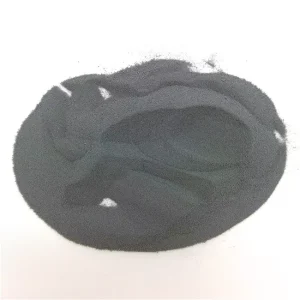Nano Hafnium Hf Powder CAS 7440-58-6
About Nano Hafnium Hf Powder: Hafnium is a shiny, silvery, malleable metal. It is resistant to corrosion because it forms a tough, impenetrable oxide film on its surface. The metal…
Ultrafine Zinc Stearate Emulsion: Colloidal Lubrication and Release at the Nanoscale zinc soap
1. Chemical Structure and Colloidal Structure 1.1 Molecular Design of Zinc Stearate (Ultrafine zinc stearate emulsion) Zinc stearate is a metallic soap created by the response of stearic acid– a…
Boron Powders and Amorphous Boron: High-Energy Materials with Diverse Technological Applications bf3 * oet2
1. Fundamental Chemistry and Structural Characteristics 1.1 Crystalline vs. Amorphous Boron: Atomic Setup and Purity (Boron Powder) Boron, element 5 on the table of elements, exists in numerous allotropic forms,…
The Ultimate Guide to Oil Immersed Transformers: Powering Modern Grids with Reliability and Efficiency buchholz relay operation
Discover the detailed guide to oil submersed transformers, consisting of oil submersed power transformers and oil immersed distribution transformers. Discover their working principles, types, benefits, and developing function in clever…
A Must-Read for Purchasing Railway Cast Iron Parts: 5 Critical Quality Standards You Can’t Ignore
Every component in a train system have to function well. This keeps the system secure and reliable. Train casting parts are very vital. They offer support, connect points, and conduct…
Google Adds “Crisis Response” for Cybersecurity Threats
Google announced a new feature today. This feature is called “Crisis Response.” It is specifically for cybersecurity threats. The tech giant aims to help organizations during major online attacks. These…
Google Adds “Focus Mode” for Distraction-Free Writing in Docs
Google announced a new feature for its Docs service. This feature is called “Focus Mode”. It helps users write without distractions. Google Docs is widely used for writing documents. Many…
Google Announces New Features for Google Contacts
Google Announces New Features for Google Contacts (Google Announces New Features for Google Contacts) FOR IMMEDIATE RELEASE MOUNTAIN VIEW, Calif. – Google announced updates for Google Contacts today. These updates…
Boron Carbide Powder: The Ultra-Hard Ceramic Enabling Extreme-Environment Engineering boron carbide
1. Chemical and Structural Basics of Boron Carbide 1.1 Crystallography and Stoichiometric Variability (Boron Carbide Podwer) Boron carbide (B FOUR C) is a non-metallic ceramic compound renowned for its remarkable…
Google Announces New Features for Google Keep
Google announced new features for its note-taking app Google Keep today. The updates aim to improve how users organize and manage their notes. These changes are available now. (Google Announces…
Facebook Tests A “Shop” Tab In Facebook Watch Parties
Facebook Tests A “Shop” Tab In Facebook Watch Parties (Facebook Tests A “Shop” Tab In Facebook Watch Parties) MENLO PARK, Calif. – Facebook is testing a new “Shop” tab directly…

